EXCELLENT SCIENCE EXPERIMENT IDEAS FOR STUDENTS
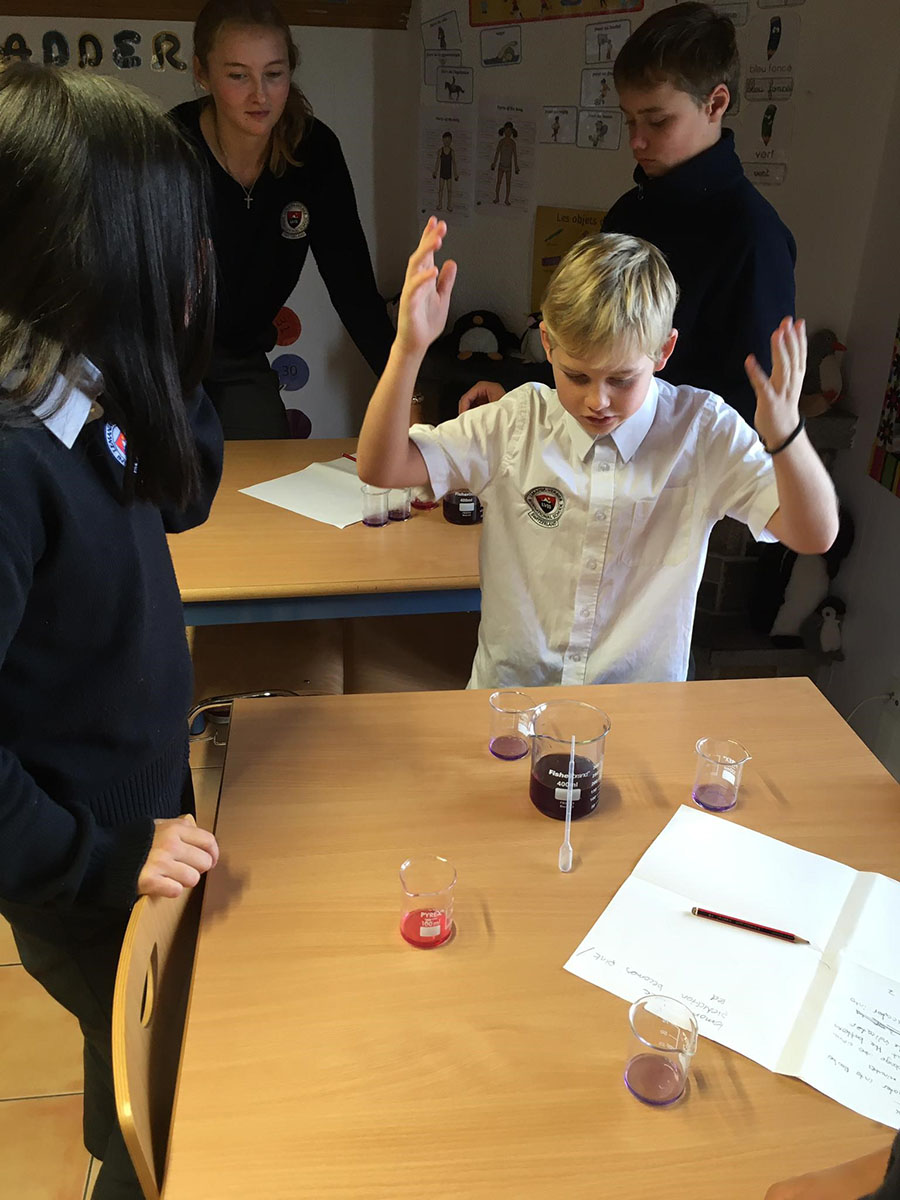
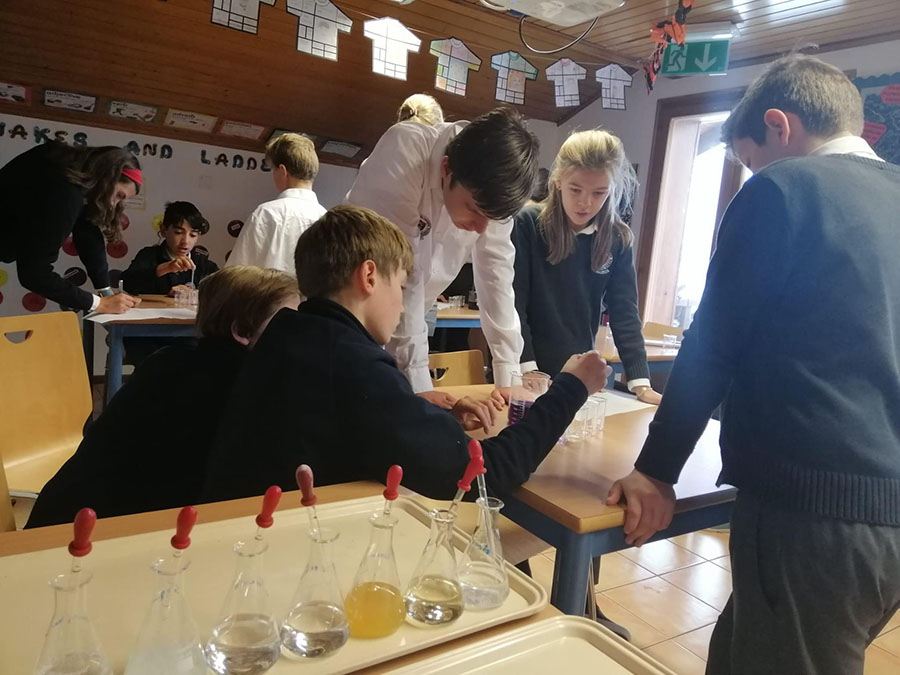
A science fair is a fun and educational event typically presented by schools across the world. Science fairs shouldn’t be mistaken for being simple presentations; pupils involved in a science fair are challenged to come up with comprehensive reports to explain their hypothesis and experimental findings while showcasing models or display boards to an audience.
SCIENCE AT VERBIER INTERNATIONAL SCHOOL
Last Friday, VIS hosted a Science Day during which the pupils rotated from station to station in order to execute experiments. Our youngest children in Class A designed brain hats and developed a music maker. In the brain hats, students chose different colours to create and colour various parts of the brain on the hat. Classes B and C, on the other hand, experimented with colours by combining them to create new ones. During the process, the students utilized the paper chromatography technique to isolate black color into its initial colors. Here is an illustration of the experiment:
1.CHROMATOGRAPHY
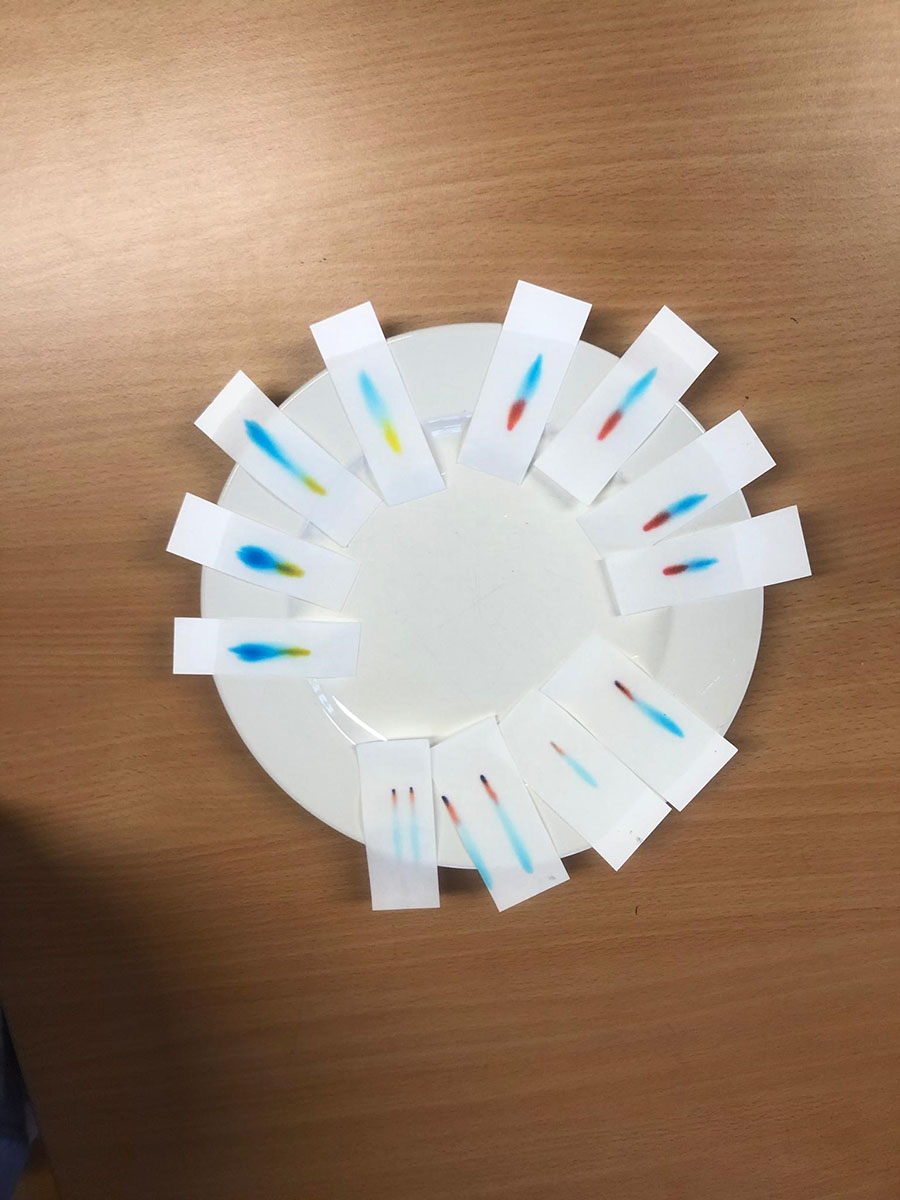
Chromatography is a scientific technique used to separate mixtures. In order to use this technique, there needs to be a solvent (called the mobile phase), a mixture that is soluble in the solvent, and a stationary phase (the chromatography paper).
In the experiment below, saltwater is used as the mobile phase to separate the components of the black, water-soluble markers.
Particles in the black ink are carried by the mobile phase along the stationary phase. Each colour moves at different speeds, therefore separating the components of the ink, leaving coloured spots behind.
Materials Used
- Beaker
- 1/2 teaspoon of salt
- Chromatography paper (3 cm wide by 6 cm high)
- Stirrer
- Tweezers
- Black water-soluble marker
- 20 ml of water
Method
- Draw a dot using the black marker about 2 cm from the edge of the chromatography paper.
- Add the salt to the beaker of water and stir thoroughly until the salt dissolves completely.
- Insert the chromatography paper and place it in a vertical position inside the beaker. Ensure that the black dot is positioned closest to the water albeit above the water.
- Let the water rise up the paper. Wait a few seconds before removing the paper with the help of tweezers when the colors have finally separated.
Understanding the Reaction
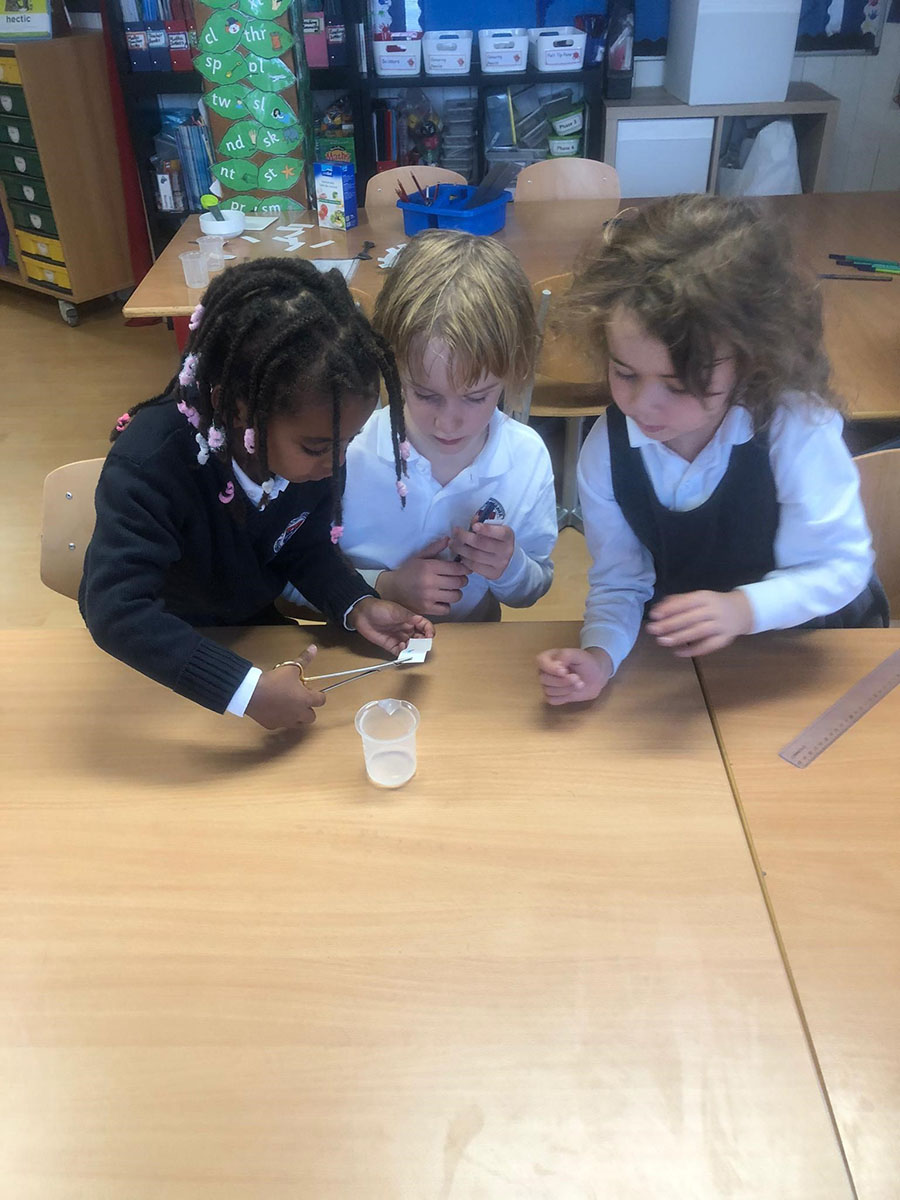
Black marker is comprised of various colors. The saltwater solution facilitates the separation process. The different coloured molecules move at different speeds up the paper. You can incorporate other felt pen colors in the experiment such as violet, green, and brown.
Classes B and C also created paper helicopters and enjoyed watching the fall to see whose helicopter would fly the longest in the air. Class D, E, and F used red cabbage to create a pH indicator. They also used baking soda and vinegar to create a fire extinguisher.
2.RED CABBAGE INDICATOR
A chemical indicator is a substance that gives a colour change in the presence of an acid or an alkali. Red cabbage contains anthocyanins which give the cabbage its strong colour and make it an excellent indicator.
Materials Used
- 2 x 100 mL glass beakers
- A kettle full of boiling water
- Chopped red cabbage
- Sieve
- 2 x bowls
- Dopper
Solutions to Test
- Vinegar
- Oven cleaner
- Baking soda (sodium bicarbonate)
- Sodium hydroxide solution NaOH
- Soap
- Hydrochloric acid HClLemon juice
- Salt
- Sugar
Method Used
- Chop the cabbage and put it in a bowl.
- Pour approximately 400 mL of boiling water in the bowl and leave it for a few minutes.
- Place a sieve over the second bowl and pour the mixture through.
- The red cabbage indicator will now be ready for use.
- With the dropper, put a small amount of the red cabbage indicator inside a 100 ml beaker.
- Follow that with a few drops of vinegar.
- Note the color of the indicator down.
- Clean the beaker or use a new one and repeat steps 5 to 7 using the sodium bicarbonate solution, soap, hydrochloric acid, and oven cleaner.
Analyzing the Reaction
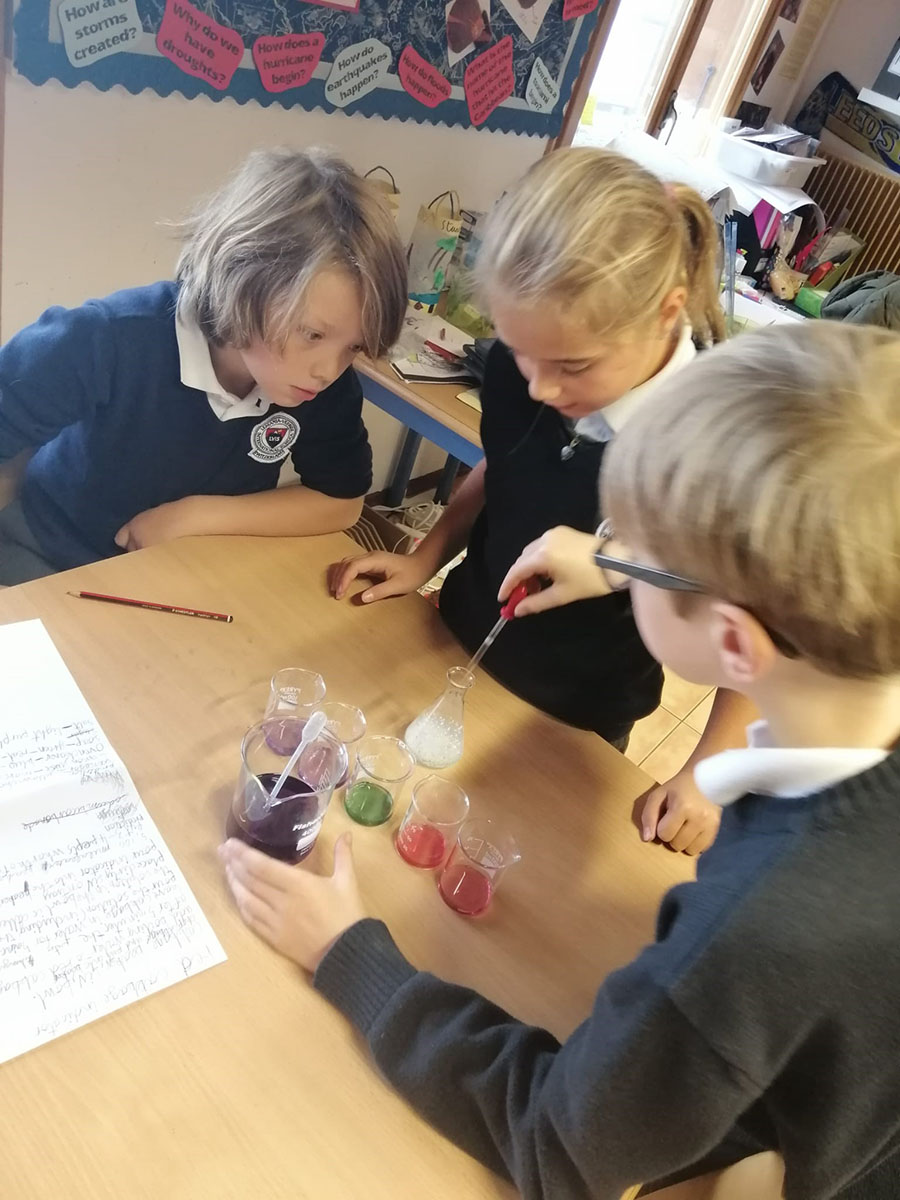
- The color of red cabbage changes under basic or acidic conditions
- Neutral solutions will not change the colour of the indicator.
3.FIRE EXTINGUISHER
A fire extinguisher is critical safety equipment in the laboratory and at home. A fire extinguisher is designed to strip the fire of oxygen. You can easily make a fire extinguisher with very basic ingredients available in your kitchen.
Materials Used
- Empty plastic bottle
- ½ tablespoons of baking soda
- 5 tablespoons of vinegar
- Funnel
- Tea light candle
Method Used
- Light the candle
- Pour the vinegar inside the plastic bottle
- Use a funnel to add the baking soda and you’ll notice a fizzing reaction
- Hold the bottle sideways over the lit candle exercising caution to ensure that no liquid escapes.
Analyzing the Reaction
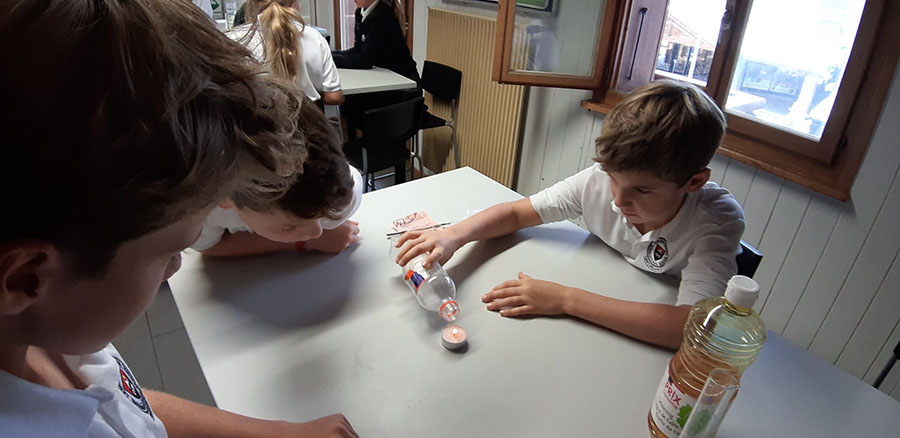
Vinegar and baking soda react to form carbon dioxide which is heavier than air. While the gas pours out of the bottle, it pushes the oxygen which is present in the air, away from the candle. The candle can’t continue burning without oxygen, which means it will go out.
FINALLY
Science Days and experiments are an important and worthy investment of energy and time. They can open a pupils’ minds towards enhance scientific knowledge, great career possibilities, and promote speaking and presentation skills.






